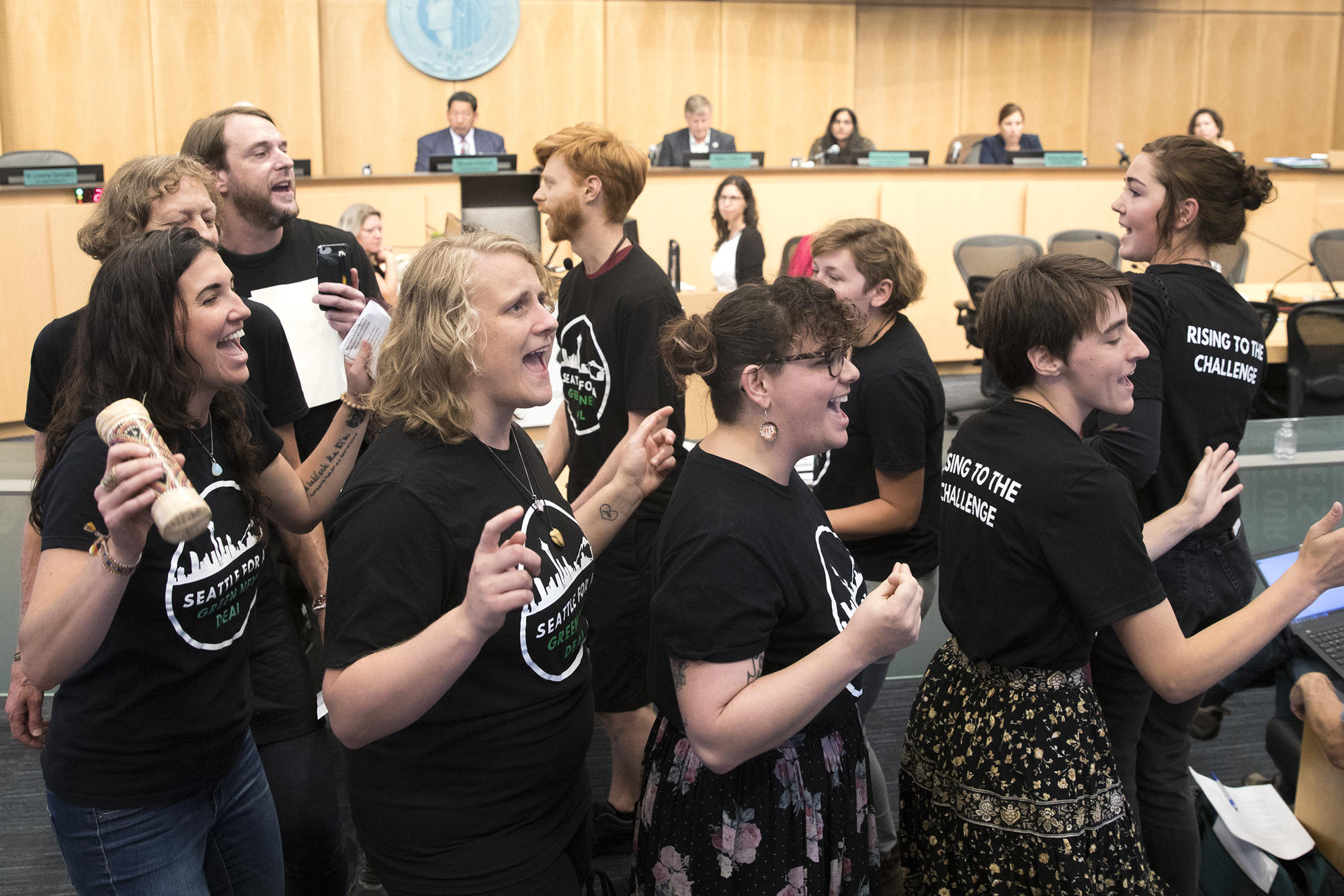Advocates of the plan have been speculating about what a Green New Deal might look like in Seattle while emphasizing the value of community input, especially from disadvantaged and vulnerable populations. In the end, the resolution that passed is mostly in line with the goals pushed forth by environmental group Seattle for a Green New Deal, which is run largely by Got Green and 350 Seattle.
Councilmember Kshama Sawant called the resolution “necessarily ambitious,” referring to its goal to dramatically push Seattle forward in its climate and equity initiatives.
“This is a very strong resolution with which to base our future fight on,” Sawant said. “There’s no other way to achieve this.”
The resolution, which was finalized hours before the council meeting, is inspired by the Green New Deal introduced by progressive leaders in Congress earlier this year. While that resolution has stalled, some municipalities, including New York and Los Angeles, have moved forward with their own versions. The resolution that the Seattle City Council passed details a broad range of green initiatives, including the promotion of free public transportation, elimination of carbon pollutants and adoption of renewables. The council first showed support of a resolution in June when advocates asked council members to sign a pledge committing to a citywide Green New Deal.
Lavanya Madhusudan, assistant to Councilmember Mike O’Brien, said while the resolution is nonbinding, it does set the stage for future action in the city.
“The resolution is the first step,” Madhusudan said by email before the vote. “By laying out a vision for what we are working towards, it sets the stage for future legislation to act to make this vision a reality.”
The resolution states that while the city has made some steps towards the goals listed within it, “that progress is insufficient to make the necessary changes to shift Seattle’s economy to be more equitable and ecologically sustainable.” The resolution suggests that financing of these actions be taken with “progressive revenue sources” and public funds.
While Seattle’s Green New Deal mentions carbon-cutting efforts the city already is pursuing, it calls for them to be pushed further. Mayor Jenny Durkan’s 2018 Climate Action Strategy aims for carbon neutrality by 2050, for example, while the resolution seeks to create a new goal of carbon neutrality by 2030. Madhusudan says that by expediting these actions, the resolution wants “to create action to redouble our efforts to meet the urgency of the climate crisis.”
Initially, advocates of Seattle’s Green New Deal were interested in creating an ordinance that would have been proposed alongside this resolution in order to ensure follow-up action. While no concurrent ordinance was proposed, Madhusudan says that it has been discussed in committee, and an ordinance to create a Green New Deal Oversight Board will be reviewed and revised over the next few weeks. At this point, she expects that it will be brought to a vote in early September.
For now, advocates say that the resolution is a solid beginning. King County Councilmember Larry Gossett, who spoke during the city council’s public comment period, also expressed an interest in introducing a Green New Deal resolution at the county level: “It’ll be a great foundation for me to pick it up and spread it.”
The resolution comes as Seattle is on the brink of electing a new council. After the general election in November, at least four council seats will have new occupants. O’Brien, who has worked with advocates to bring the resolution to council for weeks and is lead sponsor of the resolution, will not be returning. He encouraged new council members to push the Green New Deal and address the global climate crisis in his absence.
“A resolution alone is not going to solve it,” O’Brien said. “We have a lot of work to do going forward.”


